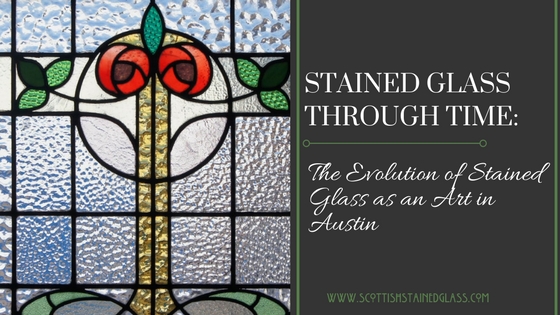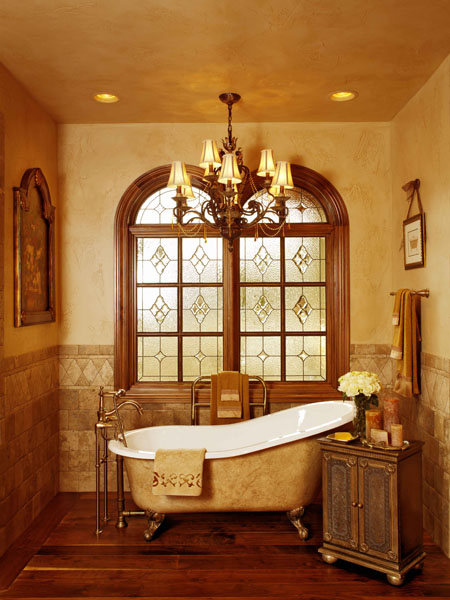
The term stained glass can refer to two different things. Stained glass can mean glass that has been dyed using metallic salts to produce a colorful appearance. Or, more commonly, it can also mean windows composed of multiple pieces of colorful assembled and constructed together within a single pane to create a colorful design.
Over the years, stained glass has evolved greatly as a form of art. While it was once used for simple purposes, such as creating jewelry or pottery, it now holds a greater importance in the world of architecture. In Austin, stained glass can commonly be found in luxury homes, high end establishments, and various types of religious buildings. Some of these works are older and more traditional looking, while others are brand new and highly contemporary.
But where did this ancient form of art come from, and what purpose will it serve in the future? In this post, we’ll examine the past, present, and future of glassmaking and stained glass art.
Long before colored glass was used for windows, it was created for the manufacture of small objects, such as pottery and jewelry. However, it began being used more widely as a medium and eventually found its way into early Christian churches in the 4th and 5th century. Thin pieces of alabaster were placed into wooden frames to create a stained glass like effect.
Over the years, glassmakers began becoming more and more creative with the designs. Soon, large ornate windows were created, many of which displayed entire portraits or scenes for the Bible. It was then that stained glass took on a new role and was used as a way to educate the general population about the lessons and stories in the Bible without the need for reading, a skill which had not yet been widely cultivated. The movement took off and soon after some of the greatest stained glass windows ever produced came into existence, include Sainte-Chapelle, Notre Dame, and Chartres Cathedral.
Today, the use of stained glass windows is no longer confined to solely religious architecture. Modern architects have found use of stained glass for its practical benefits. For example, placing a stained glass window in a sunny area helps to filter and soften light. And using stained glass in place of blinds or curtains is also a great way to create privacy.

New advances in technology have allowed stained glass to be built better than ever before, with more accurate measurements and precise engineering of the panels themselves. Modern artists have also begun to use stained glass in creating mixed medium art, sculptures, and statues. Where exactly the future of stained glass lies is hard to say, but, looking back on history, one can easily predict that it will continue to evolve and advance as a form of art.
At Scottish Stained Glass, our primary goal is to continue the long standing traditions of glassmaking and preserve this ancient form of art. And if you too would like to be part of preserving history, you certainly can! You can have your very own stained glass window created for your home or church. Simply contact our office by phone or email and we’ll help you get started on a design.
© Scottish Stained Glass 2000- All Rights Reserved | A Part of Scottish Group Companies